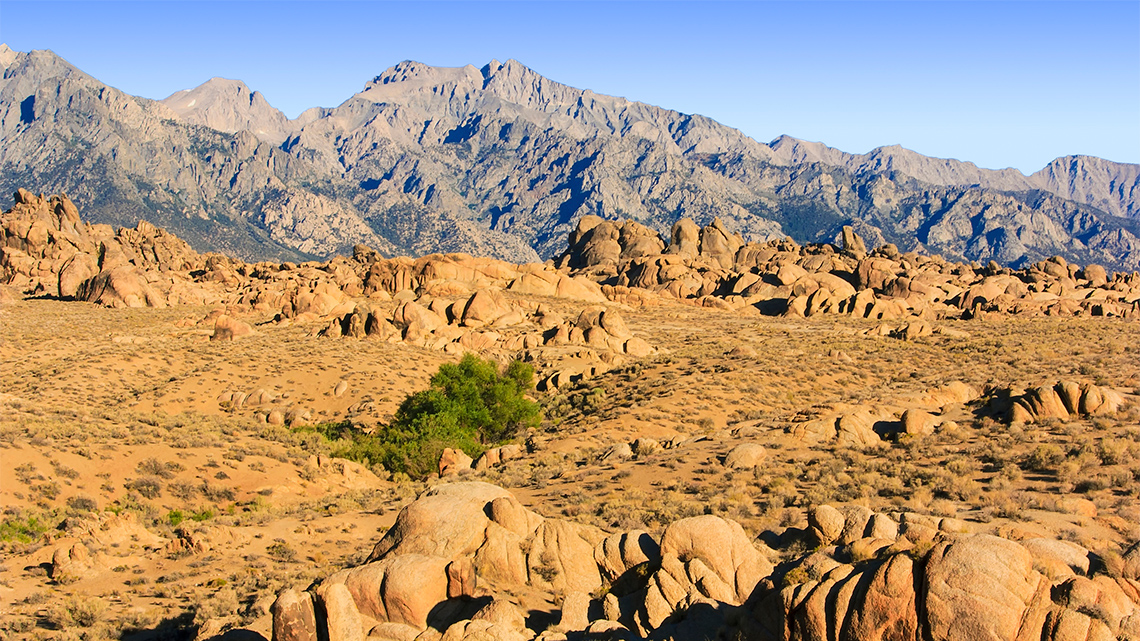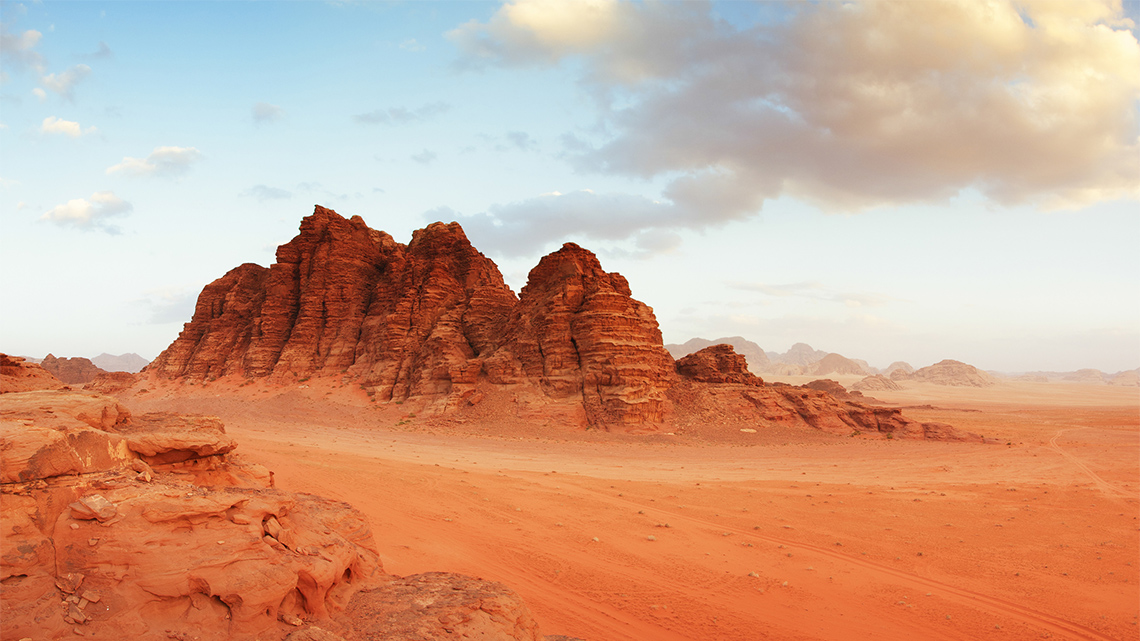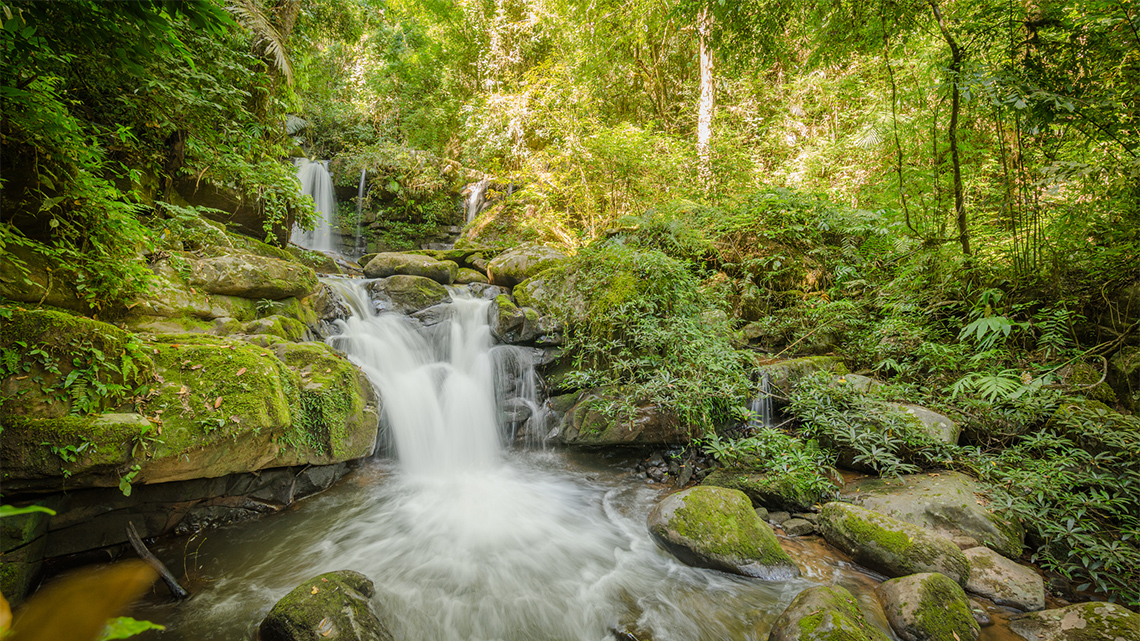Minds On
Opportunities and challenges of the physical environment
Explore the following series of images and descriptions of the physical environment in different areas of the world. For each environment, consider the following questions:
- What is a challenge presented by this environment?
- What is an opportunity presented by this environment?
Record your responses orally, digitally, in print, or in a method of your choice.
You will be using these answers as you move into the Action section. Consider a way to structure your notes to keep the opportunities and challenges separate.
Action
Part 1: Environmental impact on humans
The physical environment provides both opportunities and challenges for humans.
For each of the types of environments presented in the Minds On activity, determine whether the statement would be considered an opportunity or a challenge.
Select the correct answer for the statements in all four environments.
Desert environment
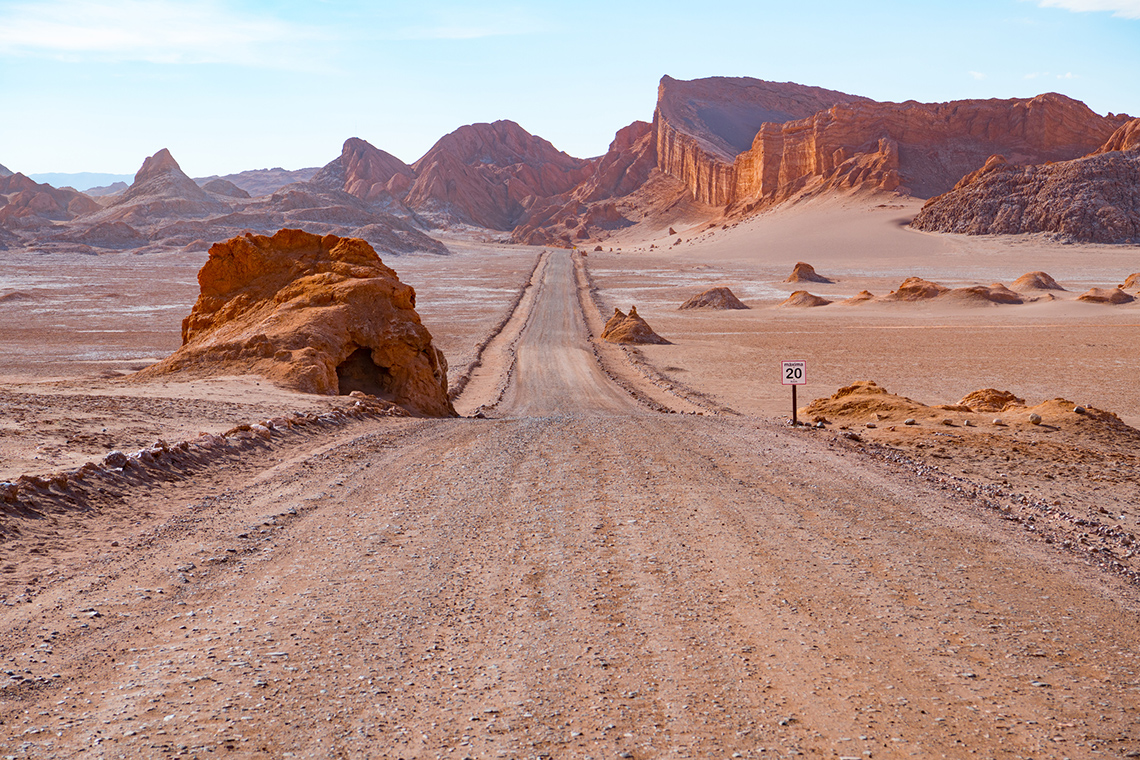
Mountain environment
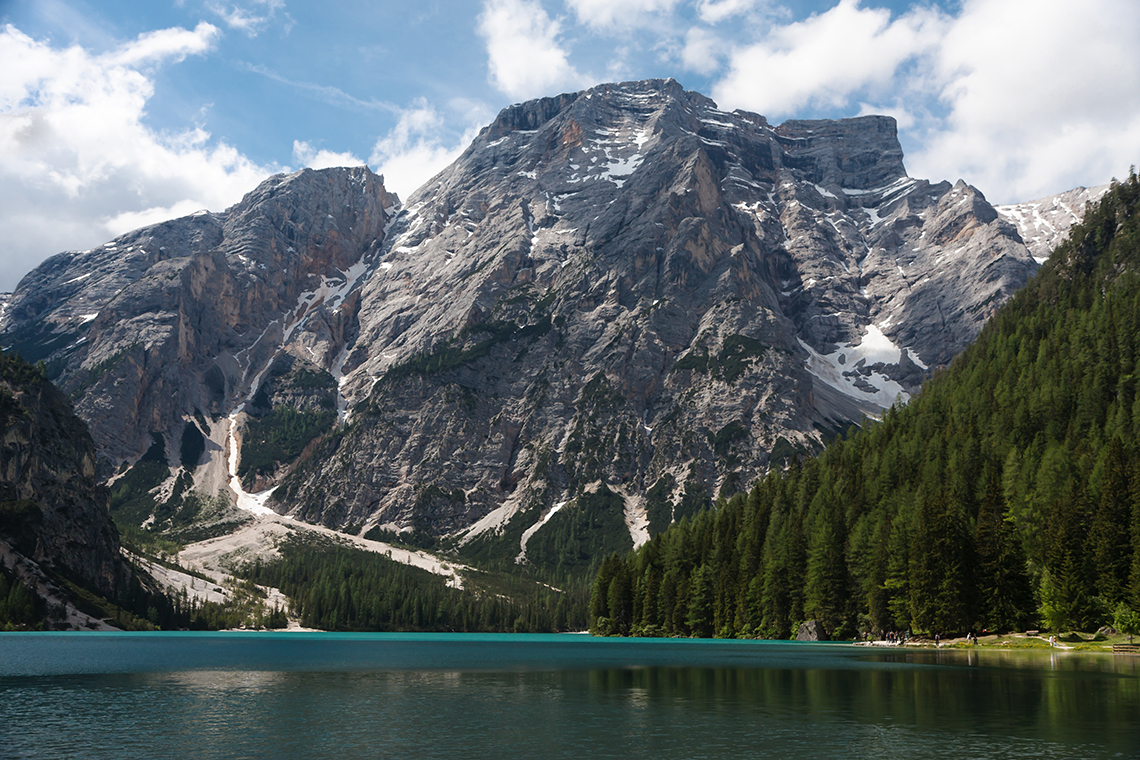
Tropical rainforest environment

Arctic environment
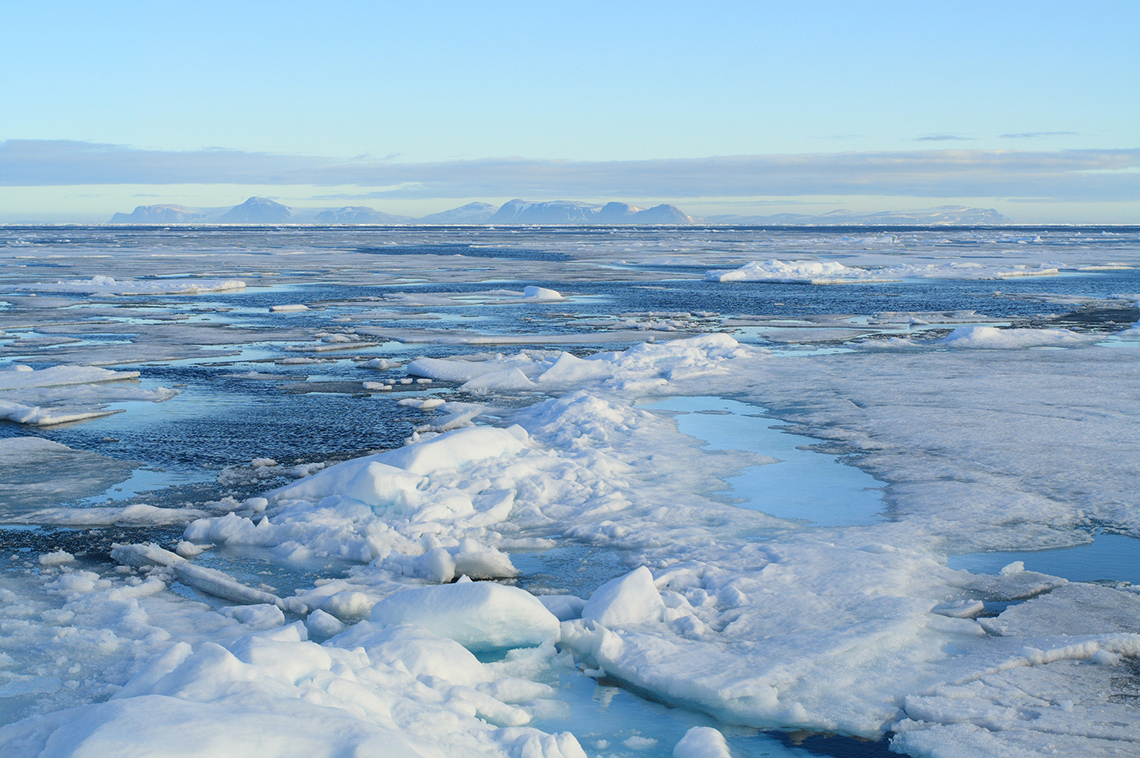
Part 2: Reflecting on opportunities and challenges of the physical environment
Choose three to five of the statements from the previous matching activity that you feel have a significant (large) impact on humans, either as an opportunity or a challenge. For each of these statements, answer the following questions. You may need to do a little research to support your ideas.
- Do you think this impact might be a challenge or opportunity? In what way?
If the impact is a challenge, answer: How could a challenge be overcome to create an opportunity?
Press ‘Hint’ to access some ideas.
- If the impact is an opportunity, answer: What could cause a challenge to this opportunity?
Press ‘Hint’ to access some ideas.
- Is there an instance where a challenge for one person could be perceived as an opportunity for another person?
Press ‘Hint’ to access some ideas.
Review the following decision tree with example answers. Using the following Opportunity and Challenge Decision Tree graphic organizer, choose three statements and complete a decision tree on your own for each statement.

Example “your statement” In a Tropical Rainforest environment, the weather is consistently hot and humid. This is a challenge. What makes this a challenge is that humidity makes it difficult for humans to cool themselves off from the heat. This challenge can be overcome with years of living in this continued climate (bodies would adapt) and the opportunity could be that by adapting to the heat, people can continue to plant and farm the area which is rich in soil and growing potential
Complete the Opportunity and Challenge Decision Tree in your notebook or using the following fillable and printable document. If you would like, you can use speech-to-text, or audio recording tools to record your thoughts.
Press the ‘Activity’ button to access the Opportunity and Challenge Decision Tree.
Part 3: Human and natural impact on the physical environment
The environment impacts us and how we are able to live, and then in the same way, we impact the environment in how we choose to live.
This episode of The Water Brothers demonstrates how trees in the Amazon are being destroyed as the forest is being removed and the consequences of this action.
As you explore this video, take note of the following:
- How have humans impacted this environment?
- How has this impact altered the rainfall in this environment?
- What might happen if we continue to take from the environment without giving back?
Complete the following The Flying Rivers Notes in your notebook or using the following fillable and printable document. If you would like, you can use speech-to-text, or audio recording tools to record your thoughts.
Press the ‘Activity’ button to access The Flying Rivers Notes.
Student Success
Think-Pair-Share
From your jot notes, choose one way in which humans have impacted the Amazon rainforest and discuss, if possible, with a partner:
- the action that humans have taken
- the impact on the Amazon forest
- the consequences of this impact
What new learning about the impact of the environment on humans or the impact of humans and natural processes on the environment has surprised or affected you the most? Why is that?
Note to teachers: See your teacher guide for collaboration tools, ideas and suggestions.
Consolidation
Humans and the environment
Throughout this learning activity, you have begun to discuss and analyse how as humans we are connected to the environment.
We have explored how the environment impacts humans and how humans impact the environment.
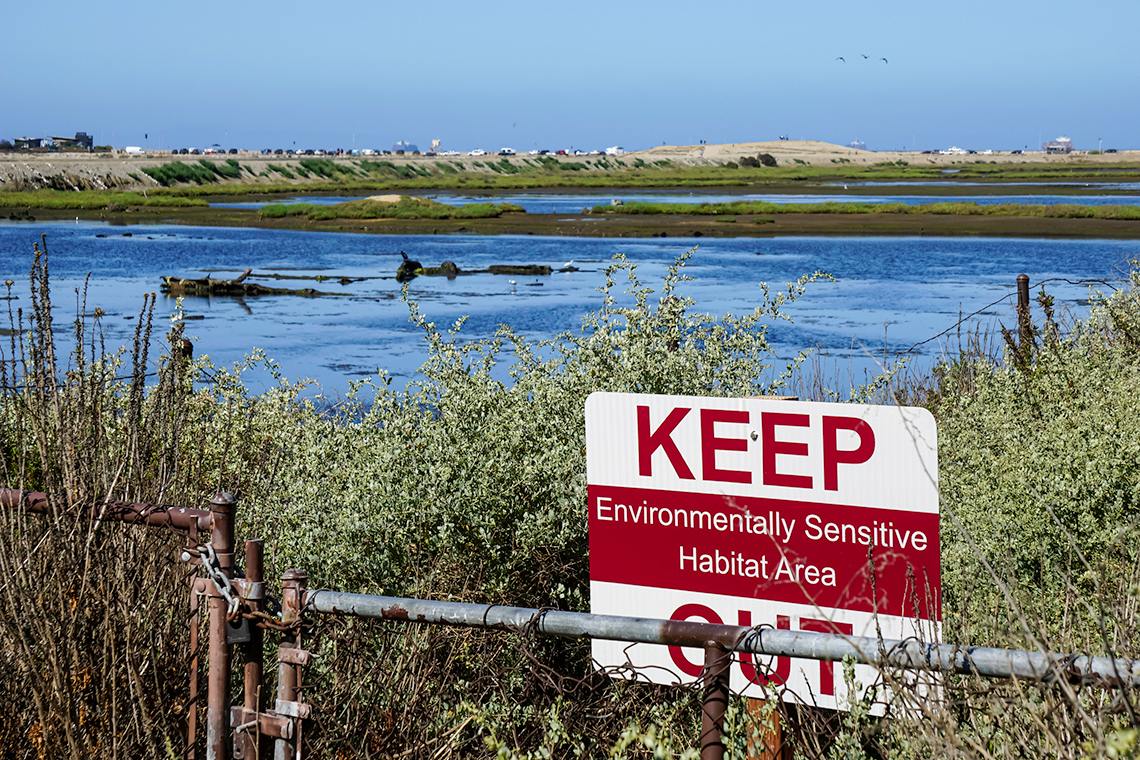
Brainstorm
Acting positively
Can you think of a way that the environment and humans could interact in a positive way?
Press ‘Examples’ to access example answers.
These are some ways in which humans and the environment could interact positively:
- the creation of a protected space
- planting trees
- extraction of medicine from plants
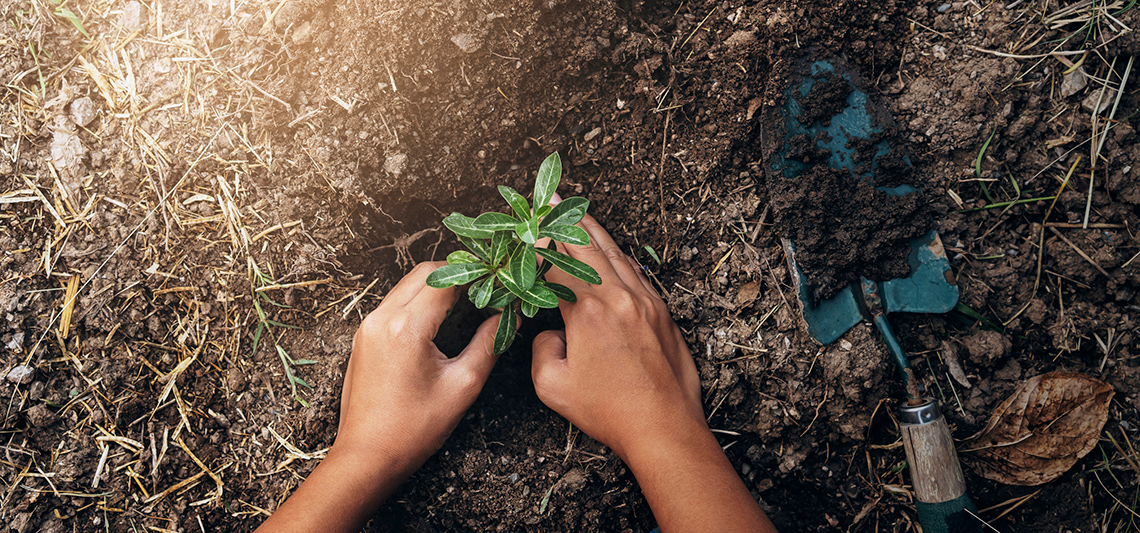
Indigenous people have been living on the lands in what is now known as Canada since time immemorial, or as long as can be remembered.
With each generation, they have learned from their environment about how best to take care of it in a sustainable way. This is called traditional ecological knowledge. Traditional ecological knowledge refers to the environmental knowledge and sustainable practices that Indigenous peoples have developed over centuries. This knowledge comes from the observations of generations of Indigenous peoples living on the land, each continually learning about specific plants, environments, and the ecological factors that exist in a given area. Even as time goes on, this knowledge adapts to the ever-changing environmental circumstances. Each nation has its own beliefs, laws, and teachings regarding how to care for and sustain the Earth.
From your Grade 7 perspective, explore the following video titled “Raven's Quest: Kajsa." Take note of when Kajsa discusses traditional ecological knowledge.
Connections
Considering the environment
Why is a positive interaction between humans and the environment so important? What if everyone considered this? What could be a positive consequence of this?
Consider one way that humans and the environment interact positively and consider a creative way to communicate this information to a young audience to teach them why it is important to continue this work.
Use the following checklist to ensure that you have included all the necessary information for your creative piece.
My information piece has included:
Communication Checklist
Reflection
As you read the following descriptions, select the one that best describes your current understanding of the learning in this activity. Press the corresponding button once you have made your choice.
I feel...
Press ‘Discover More’ to extend your skills.
Discover MoreIndigenous communities only take from the earth what they absolutely need. They ensure that nothing that is taken from the earth will not be available for future generations.
In the following two videos, we are introduced to Marissa and Hope. Marissa shares how her family harvests wild rice. Hope shares how she harvests the Three Sisters in her garden.
As you explore these stories, consider how Marissa and Hope are sharing their traditional ecological knowledge. How can we learn from these stories?
Record your thoughts in a method of your choice.
Explore the following video titled “Raven's Quest - Gr 1-3 Social Studies: Marissa”
Access the following video titled “Raven's Quest - Gr 1-3 Social Studies: Hope”
